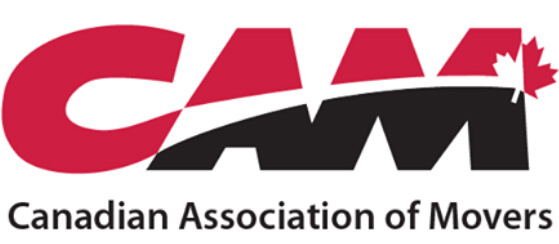(en anglais)
What is Moving Protection?
We’re all human. Things happen during a move. Understanding moving protection is complicated, but necessary. The number one complaint for CAM is consumers who didn’t understand if and how much their household goods were protected. Thanks to Allied Van Lines Canada & Atlas Van Lines (Canada) Ltd. for assisting with this information.
Released Value Protection is the basic coverage that is contained in all contracts for moving of household effects and is included in the cost of your move.
- Under released valuation, the mover’s liability is limited to $0.60 per pound ($1.32 per kg) per article for household goods under provincial conditions of carriage regulations. This would mean that a table weighing 100 lb. that is being shipped and which is damaged beyond repair would result in a cash settlement of $60 (100 lb. x $0.60 per lb.) even if the actual replacement cost of the table were $1,000.
- Released valuation limits your claim to a maximum amount which is based on the total weight of your shipment (including the weight of cartons). For example, in the unlikely event of a total loss, let’s say by fire, your maximum protection would be $0.60 per pound multiplied by the weight of your entire shipment If your shipment weighed 5,000 lbs., the maximum settlement would be $3,000 (5,000 lbs. x $0.60 per lb. = $3,000).
- Released valuation is generally not adequate because it provides only minimal coverage. Consider these alternatives.
- You should check with your insurance agent to find out if you have alternate insurance on your household possessions that provides a complete, all risk protection during loading, unloading, transportation and storage. Most homeowner policies do not cover you in this situation.
- Occasionally, a special rider can be purchased from your insurer but the premium is usually higher than purchasing Replacement Value Protection coverage from the mover.
- If Released Valuation and your home insurance together are not adequate, then you should purchase the Replacement Value Protection that the mover is offering.
The purchase of Replacement Value Protection (RVP) is recommended to ensure your shipment is adequately covered during your move.
- RVP means that if a damaged item cannot be repaired to its original condition, it will be replaced at today’s market price.
- RVP protection is limited only by the amount of valuation you select, so it is important that you establish a realistic replacement value of all of your possessions.
- The only requirement is that your shipment be protected to a minimum of $10.00 per lb. multiplied by the actual weight of your household goods. For example, if the total weight of your household items is 5,000 lbs., the minimum replacement coverage can’t be less than $50,000 (5,000 lbs. x $10.00 per lb.).
- Your moving company can provide you with the cost for the Replacement Value Protection as well as information on declaring items of extraordinary value, including antiques and antique cars.
- A limited protection coverage applies to motor vehicles, trailers, campers, snowmobiles, motorcycles, boats or motors. These items must be shown separately on the Bill of Lading (the legal document that allows the mover to transport your goods). Protection is limited to the current market value of the year, model and condition.
If you choose not to purchase (or you waive) Replacement Value Protection that the mover is offering, then Released Valuation is used.
It is important that you understand your level of protection and that your bill of lading clearly notes the coverage you selected and is signed properly by all parties involved. A Carrier Liability Certificate should be given to you because it clearly defines the mover’s liability for your shipment.
Your mover should explain to you in detail the conditions of the protection and the limitations of the coverage (if they are not, ask the mover for it!). He’ll then likely ask for your written acknowledgement that you understand the coverage.
Do not let the movers leave without having your replacement value protection or your released valuation in place.
Does my own Personal Home Owners policy cover my personal effects while being moved from one home to another?
The answer is...sometimes. Generally speaking, your personal property policy will cover your items while in transit to, and at another location in Canada which is occupied by you as your principle dwelling.
- The limit of insurance for your personal property will be divided between the existing premises, the belongings that are in transit and at the new location on the basis of the percentage of the total value of the property at each location.
- Coverage only applies for a limited number of days (e.g. 30 - 90 consecutive days) from the day you begin removing your personal property from your principal dwelling and not beyond the date the policy expires or is terminated.
- Not all losses will be protected as the policy does limit and/or exclude certain types of losses, i.e. marring, scratching of any property, breakage of any fragile or brittle articles unless caused by an insured peril so it's always best to purchase coverage from your moving company.
- Any claims made on your home owners policy will affect future premiums. The claims free discount that is applicable to most policies is between 10-20% of the total policy premium. They will also have a deductible of at least $500 and more likely $1000 today.
- Home owners are often quite unhappy when they are forced to make a claim on their own policy due to what is often perceived as negligent actions of the mover who is a paid professional. (Courtesy of NFP Canada)

